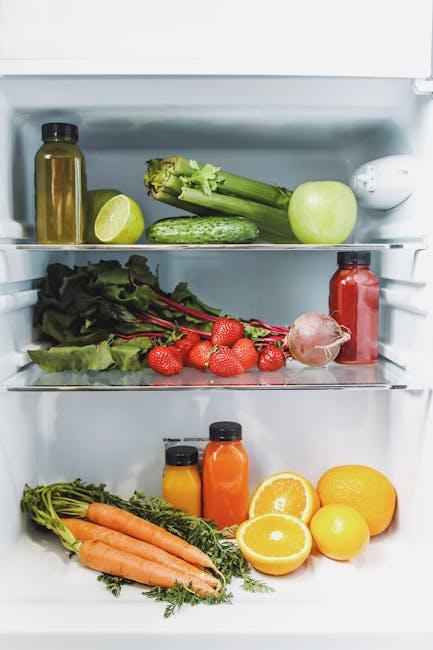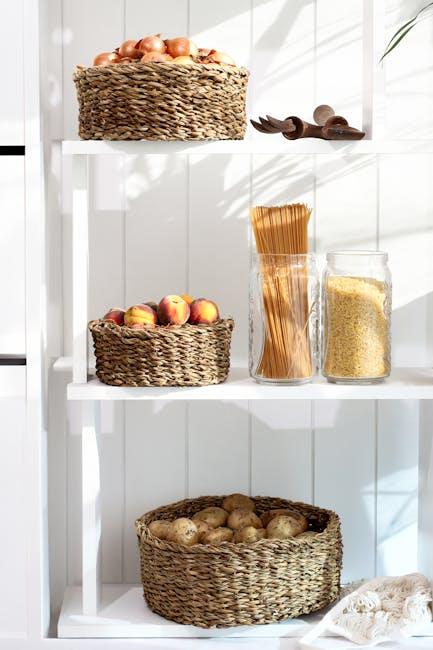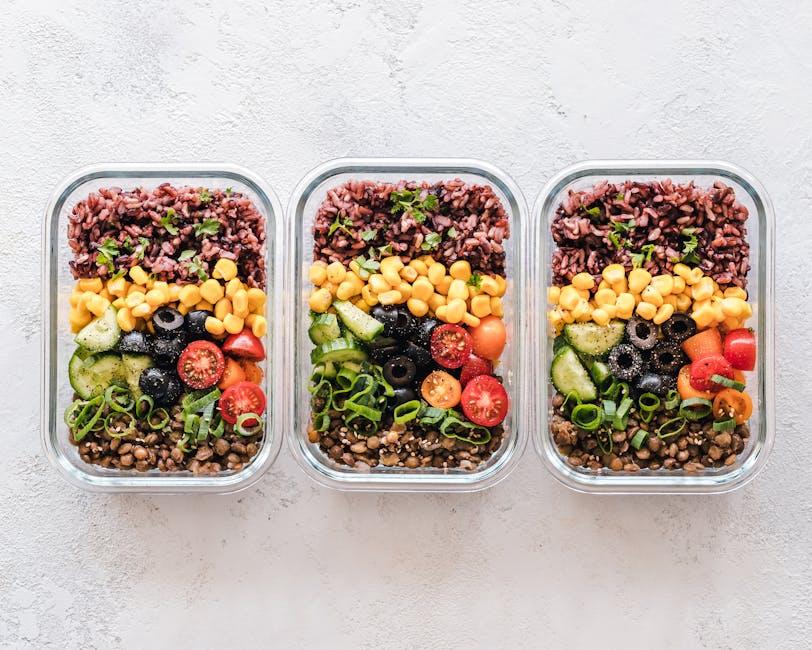A well-organized fridge is more than just a tidy space-it’s a gateway to fresher food, less waste, and a smoother daily routine. Yet, between hurried grocery runs and the constant influx of leftovers, it’s easy for the fridge to become a chaotic catch-all. Keeping your refrigerator both organized and fresh might seem like a daunting task, but with a few thoughtful strategies, it can transform into a clean, efficient haven for your groceries. This article will guide you through practical tips and savvy hacks to maintain a fridge that not only looks good but also keeps your food at its best.
Benefits of Categorizing Your Groceries for Efficient Storage

Organizing your groceries into clear categories transforms a chaotic fridge into a streamlined space where everything has a purpose and place. This method not only saves precious time when hunting for ingredients but also reduces food waste by making items more visible and accessible. Imagine reaching for your favorite yogurt without knocking over a tower of mismatched containers or discovering that bag of spinach before it wilts-smart categorization brings ease and efficiency to your daily routine.
Consider creating designated zones such as dairy, fresh produce, snacks, and beverages. This simple strategy allows you to maintain optimal storage conditions for each food type and quickly establish which items need restocking. To help you get started, here’s a quick overview of practical grocery categories and their ideal fridge locations:
| Category | Recommended Fridge Location | Storage Tip |
|---|---|---|
| Dairy | Middle shelves | Keep in original packaging to maintain freshness |
| Fresh Produce | Drawers with high humidity | Separate fruits and veggies to prevent spoilage |
| Meats & Fish | Bottom shelf | Use sealed containers to avoid cross-contamination |
| Beverages | Door compartments | Store upright to prevent spills |
Mastering Temperature Zones to Prolong Food Freshness

Understanding the distinct temperature zones inside your fridge is key to maximizing the longevity and freshness of your groceries. Each zone has its own ideal temperature range, designed to cater to the needs of different food types. For instance, the lower drawers, often called crispers, are best kept between 32°F and 40°F to preserve fruits and vegetables by maintaining humidity levels that prevent wilting and spoilage. The middle shelves maintain a consistent cool temperature, perfect for dairy products and leftovers, while the door compartments are slightly warmer, making them ideal for condiments rather than perishables.
To help you visualize the optimal placement of your food items, here’s a handy guide:
| Fridge Zone | Ideal Temp Range | Recommended Foods |
|---|---|---|
| Bottom Drawers | 32°F – 40°F | Fresh fruits, vegetables, herbs |
| Middle Shelves | 37°F – 40°F | Dairy, cooked meals, eggs |
| Top Shelf | 37°F – 40°F | Ready-to-eat foods, leftovers |
| Door Compartments | 45°F – 50°F | Condiments, juices, butter |
By customizing your fridge organization to these zones, you not only reduce the risk of spoilage but also ensure flavors and textures stay at their best longer. Label your shelves or drawers if needed, and remember to frequently check and adjust the fridge’s thermostat to keep everything in the perfect chill zone.
Smart Container Choices for Clutter-Free Shelving

Utilizing clear containers can revolutionize your fridge’s organization by creating visually accessible zones. Opt for stackable bins with easy-to-grip handles to maximize vertical space while keeping different food categories separate. Transparent containers allow you to quickly assess your inventory, preventing forgotten leftovers from lingering and spoiling. Incorporate containers with tight-sealing lids to maintain freshness and reduce odors, making each item easy to grab without creating a mess.
Consider investing in uniform-sized containers-this not only streamlines your shelving but also simplifies cleaning routines. Here’s a quick guide to effective storage container types:
- Modular bins: Perfect for grouping fruits, vegetables, or snacks.
- Airtight boxes: Ideal for leftovers and anything prone to drying out or absorbing odors.
- Compartmentalized trays: Great for separating cheese types or deli meats.
| Type | Best For | Key Feature |
|---|---|---|
| Clear Modular Bin | Fresh Produce | Stackable & Transparent |
| Airtight Container | Leftovers | Seals tightly to lock in aroma |
| Compartment Tray | Cheese & Deli Meats | Separate sections prevent flavor mixing |
Routine Cleaning Tips to Eliminate Odors and Maintain Hygiene

Keeping your refrigerator fresh and odor-free requires a consistent cleaning routine that focuses on removing potential sources of bad smells before they take hold. Start by wiping down shelves and drawers with a mixture of warm water and baking soda-a natural deodorizer that also kills bacteria. Be sure to clean door seals and crevices where crumbs and spills often hide. Regularly discard expired or spoiled items, and store strong-smelling foods like cheeses and leftovers in airtight containers to prevent their aromas from permeating the entire fridge.
In addition to cleaning, maintaining hygiene can be made easier with a few simple habits. Place a small open box of baking soda on a fridge shelf to continuously absorb odors, and replace it every three months for maximum effectiveness. To quickly neutralize lingering smells, keep fresh citrus peels or a few coffee grounds in a breathable bag inside the fridge. Lastly, designate specific spots for easy-to-spoil items and make it a habit to check those areas weekly, so you catch spills or potential odor sources before they worsen.
Concluding Remarks
Keeping your fridge organized and fresh is more than just a chore-it’s a small act of care that transforms your kitchen into a haven of efficiency and flavor. By embracing simple habits and mindful storage techniques, you not only extend the life of your food but also create a space that inspires creativity every time you open its door. So, take a moment, tidy up, and let your fridge be a reflection of the balance and freshness you bring into your everyday life. After all, a well-kept fridge is the first step to a well-fed soul.














